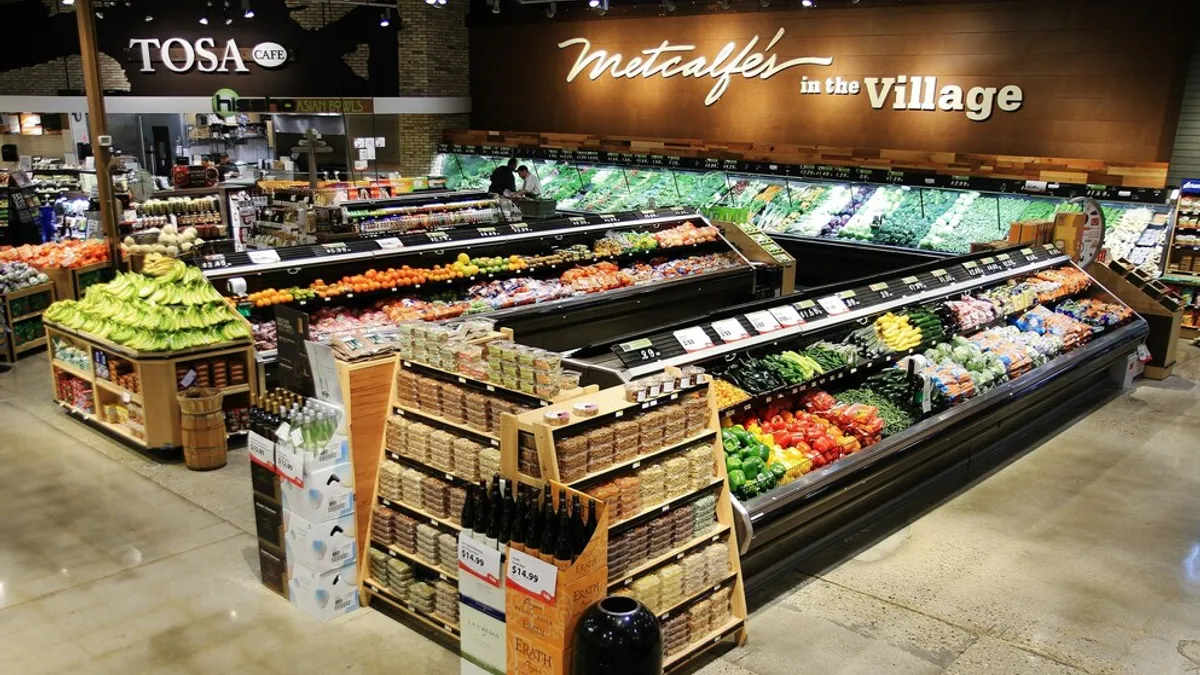Dive Brief:
- Food and beverage will be the fastest-growing online sales category during the next several years, with a compound annual growth rate of 30% over the period spanning 2019 through 2024, according to a recent report by Forrester.
- Forrester expects digital share in the category to grow from 5.4% to 10.4% between 2020 and 2024 and drive 17% of all U.S. e-commerce sales in 2024.
- The projection underscores the elevated long-term growth path for online grocery after the pandemic pushed many consumers to rely on pickup and delivery.
Dive Insight:
Food and beverage led all categories in online sales growth in 2020, with gains in the channel more than doubling to 75% from 32% in 2019. The next-highest growth category was pets, with e-commerce sales increasing 46%.
Online sales across Kroger, Walmart and Target nearly doubled last year, while Instacart increased the number of companies using its platform by 17%, Forrester reported.
As consumers get vaccinated and resume their normal shopping habits, these eye-popping figures are beginning to moderate. But growth will remain well above historic averages, Forrester and other firms have noted, as consumers embrace new digital habits and corporate innovations across grocery.
Those digital habits will extend across numerous other categories, as well, with categories like toys, clothing, personal care and furniture expected to see double-digit annual growth by 2024. Forrester estimates that online sales in the clothing category will reach 47.5% by 2024.
This elevated new normal is pressuring grocers to invest in a channel that remains unprofitable for most. Even as they broadcast a message about wanting to serve shoppers wherever and whenever they want to shop, behind the scenes they’re struggling to incorporate automation, differentiate from the competition and strike a sensible balance between running their own operations and relying on third-party marketplaces like Instacart and Doordash.
Grocers can take at least some solace in the fact that their stores are expected to drive the vast majority of sales. Forrester estimated that 72% of retail sales will come through stores in 2024.
Ultimately, retailers must determine how to effectively balance their stores and digital properties, Forrester noted, so that each channel is enhancing the other and promoting overall sales as well as customer loyalty. Although investments can be painful and the digital learning curve steep, retailers have to become fluent in these new shopping behaviors or risk losing sales to the competition.














